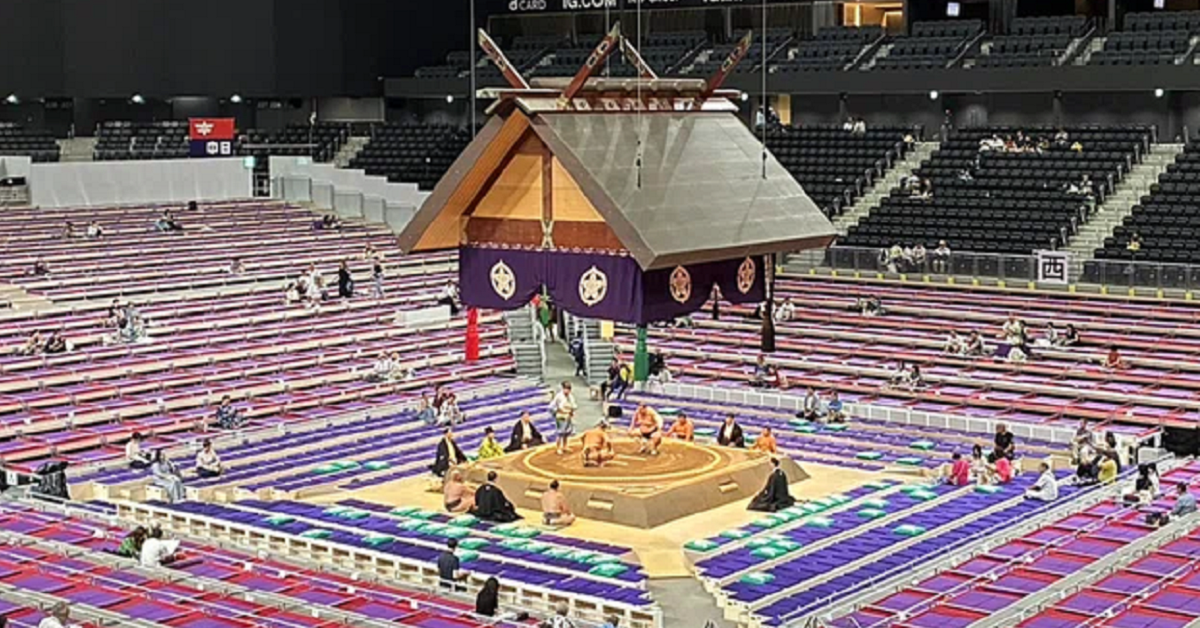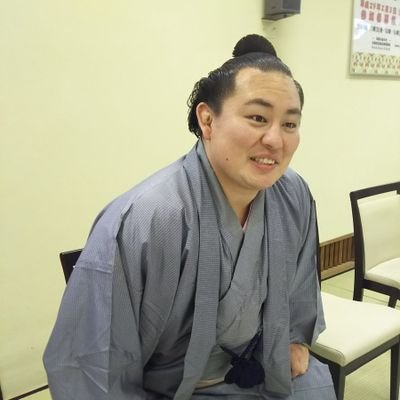Beneath the powerful clashes of sumo wrestlers lies a quiet, sacred space known as the Dohyō-Damari. It is where wrestlers prepare their minds, referees compose themselves, and judges observe in silence. Understanding this hidden area reveals how discipline, spirituality, and respect form the foundation of Japan’s national sport.
- What Is the Dohyō-Damari?
- The Position and Structure of the Dohyō-Damari
- Rules and Etiquette in the Dohyō-Damari
- The Relationship Between the Dohyō-Damari and the Judges
- Why Foreign Audiences Are Amazed by the Dohyō-Damari
- The Unsung Workers Supporting the Dohyō-Damari
- The Spirit Symbolized by the Dohyō-Damari
- Conclusion
What Is the Dohyō-Damari?
The Dohyō-Damari (土俵溜まり) is the sunken circular area surrounding the sumo ring, where wrestlers, referees, ushers, and judges stay while waiting for their turn. From the audience’s view, it appears as people seated neatly around the ring on cushions — these are the participants stationed in the Dohyō-Damari.
This space is not merely a waiting area; it is the silent backstage that supports everything happening on the ring. Wrestlers calm their minds and prepare, while referees and ushers coordinate the match’s flow.
| Role | Person | Function |
|---|---|---|
| Wrestlers | Competing rikishi | Focus mentally before entering the ring |
| Referees (Gyoji) | Judges the match | Prepares and directs the bout |
| Ushers (Yobidashi) | Assistants of the match | Call the next wrestlers, purify and maintain the ring |
| Judges (Shimpan) | Retired wrestlers or elders | Watch and determine winners fairly |
In short, the Dohyō-Damari is a meeting point of many roles that maintain the discipline and sacredness of sumo. The quiet tension around it reflects Japan’s respect for order and tradition.
The Position and Structure of the Dohyō-Damari
The Dohyō-Damari surrounds the sumo ring, which measures about 4.55 meters in diameter. Around its edge lies a sunken area about 20–30 cm deep, made of hardened clay and covered with sand and cushions.
The ring is divided into four directions — East, West, South, and North — each with a different function. The East and West sides are where wrestlers wait, while the North and South are for judges and officials.
| Direction | Main Personnel | Function |
|---|---|---|
| East | Eastern wrestlers, referees, ushers | Waiting area for East-side competitors |
| West | Western wrestlers, referees, ushers | Waiting area for West-side competitors |
| North | Judges | Observe and confirm match outcomes |
| South | Chief judge and directors | Oversee match progress and timing |
This structured arrangement ensures that the entire match operates seamlessly, with all eyes and movements centered on the ring. The harmony among these positions allows sumo to maintain its precision and solemn rhythm.
Rules and Etiquette in the Dohyō-Damari
The Dohyō-Damari is treated as a sacred space governed by strict etiquette. Everyone who sits there must maintain composure, silence, and proper posture. Even moments of stillness carry great meaning.
| Category | Rule or Practice |
|---|---|
| Posture | Sit formally (seiza) or kneel quietly |
| Respect | Bow when entering or leaving the ring area |
| Prohibitions | Eating, chatting, or using phones is forbidden |
| Behavior | Maintain silence and self-discipline at all times |
These rules reflect the spiritual roots of sumo as a Shinto ritual rather than just a sport. Wrestlers use this time for deep mental focus before stepping into the ring. Every motion — sprinkling salt, bowing, or preparing — embodies respect toward their opponent and the gods.
The moment a wrestler bows and returns to the Dohyō-Damari after a match, the movement is filled with grace, discipline, and centuries of tradition.
The Relationship Between the Dohyō-Damari and the Judges
On the northern side of the Dohyō-Damari sit five judges (Shimpan), often retired champions or elders, who observe the match closely. They ensure fairness and make final decisions when outcomes are unclear.
| Position | Judge’s Title | Role |
|---|---|---|
| North-Center | Chief Judge | Oversees all matches and disputes |
| Four Corners (East, West, South, North) | Assistant Judges | Observe from multiple angles |
| Five-Member System | Judge Team | Discusses and finalizes verdicts |
When a decision is uncertain, the judges confer and may call a “Mono-ii” (discussion). They gather at the ring’s center, analyze footage and angles, and deliver the final verdict. This careful process preserves the fairness and credibility of sumo, showing how deeply justice and precision are valued.
Why Foreign Audiences Are Amazed by the Dohyō-Damari
Many foreign spectators are astonished by the silence and formality surrounding the Dohyō-Damari. Even between matches, wrestlers wait motionless, their posture expressing discipline and respect. This calm atmosphere embodies the Japanese aesthetic of “Ma” (the beauty of silence and timing).
The ring-entering ceremony (Dohyō-iri), the throwing of salt, and the deep bows before and after each bout all symbolize purification and reverence. To many visitors, it feels less like a sporting event and more like a spiritual performance.
| Comparison | Western Sports | Japanese Sumo |
|---|---|---|
| Purpose | Competing for points or victory | Devotion of skill and spirit |
| Atmosphere | Loud and energetic | Quiet and disciplined |
| Etiquette | Handshakes or casual gestures | Deep bows and ritualized respect |
| Focus | Physical movement | Ceremony, stillness, and spiritual grace |
These contrasts highlight that sumo is not just about winning; it is a living expression of Japanese culture and spirituality.
The Unsung Workers Supporting the Dohyō-Damari
Behind the scenes, ushers and assistants ensure every match proceeds perfectly. Between bouts, ushers smooth the sand, restore the ring’s surface, and replenish the purifying salt. Their synchronized, swift movements are so precise they appear choreographed.
| Supporting Role | Primary Task |
|---|---|
| Ushers (Yobidashi) | Maintain the ring, call wrestlers, and prepare salt |
| Assistants | Manage equipment and timing |
| Progress Coordinators | Oversee match order and ensure smooth flow |
These individuals rarely draw attention, yet their flawless cooperation maintains the dignity and flow of sumo. The quiet efficiency of their work mirrors Japan’s cultural emphasis on harmony and precision.
The Spirit Symbolized by the Dohyō-Damari
The Dohyō-Damari embodies the Japanese principles of Respect (Rei), Calm (Sei), Harmony (Wa), and Integrity (Kiyosa). Beyond winning or losing, it represents a mindset of reverence, self-control, and humility.
When a wrestler sits silently awaiting his turn, that stillness contains the weight of years of training and discipline.
| Spiritual Value | Meaning |
|---|---|
| Respect (Rei) | Honor the opponent and the gods |
| Calm (Sei) | Maintain focus and composure |
| Harmony (Wa) | Seek balance between people and nature |
| Integrity (Kiyosa) | Accept victory and defeat with dignity |
Through these values, the Dohyō-Damari teaches that sumo is not only physical strength but also moral and spiritual balance. The beauty of its silence is an extension of Japan’s deeper sense of mindfulness and order.
Conclusion
The Dohyō-Damari is the heart of sumo — where wrestlers prepare their spirit, referees coordinate the matches, judges maintain fairness, and ushers preserve the ring’s perfection. Every role unites within this small circular space to sustain the integrity of Japan’s national sport.
Understanding the Dohyō-Damari changes how you view sumo. Instead of focusing solely on the action, look at the moments of silence, the bowing, and the unseen cooperation beneath the ring. There, you will find the essence of Japanese beauty and respect.
When watching sumo, take a moment to notice not just the wrestlers’ bouts, but also the stillness and discipline surrounding them. In that quiet space below the ring, the true spirit of Japan lives and breathes.





コメント